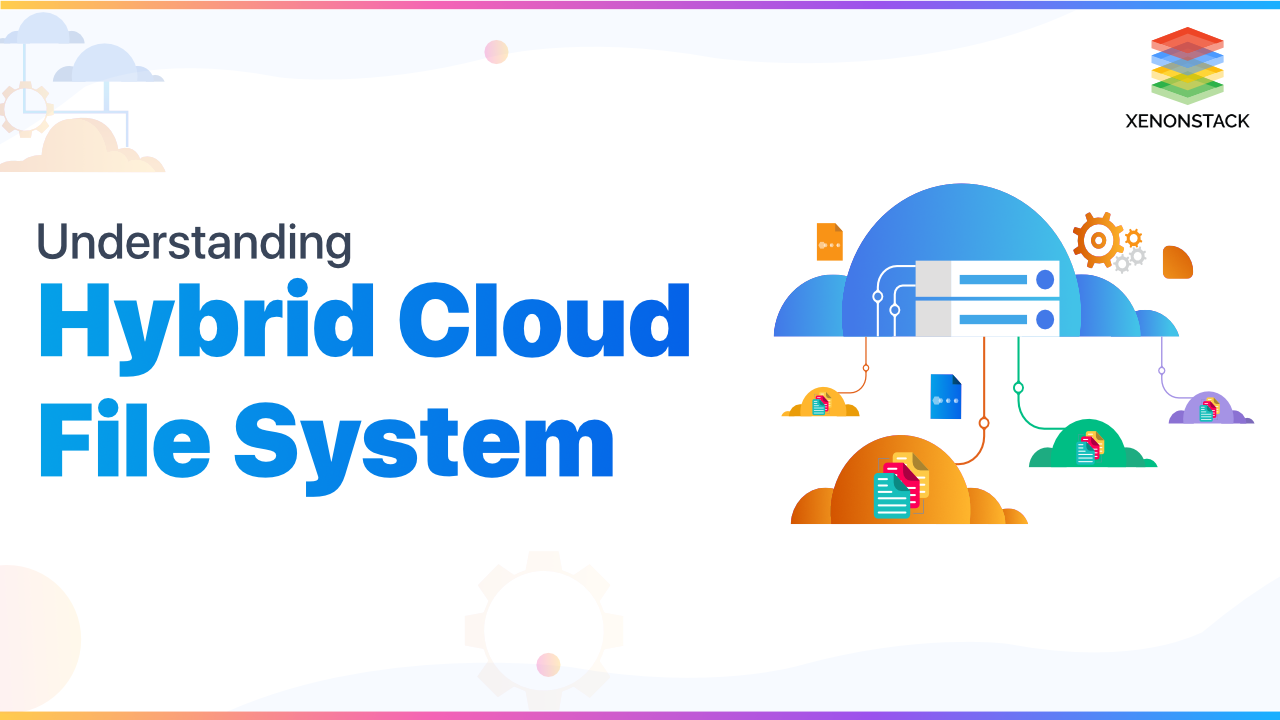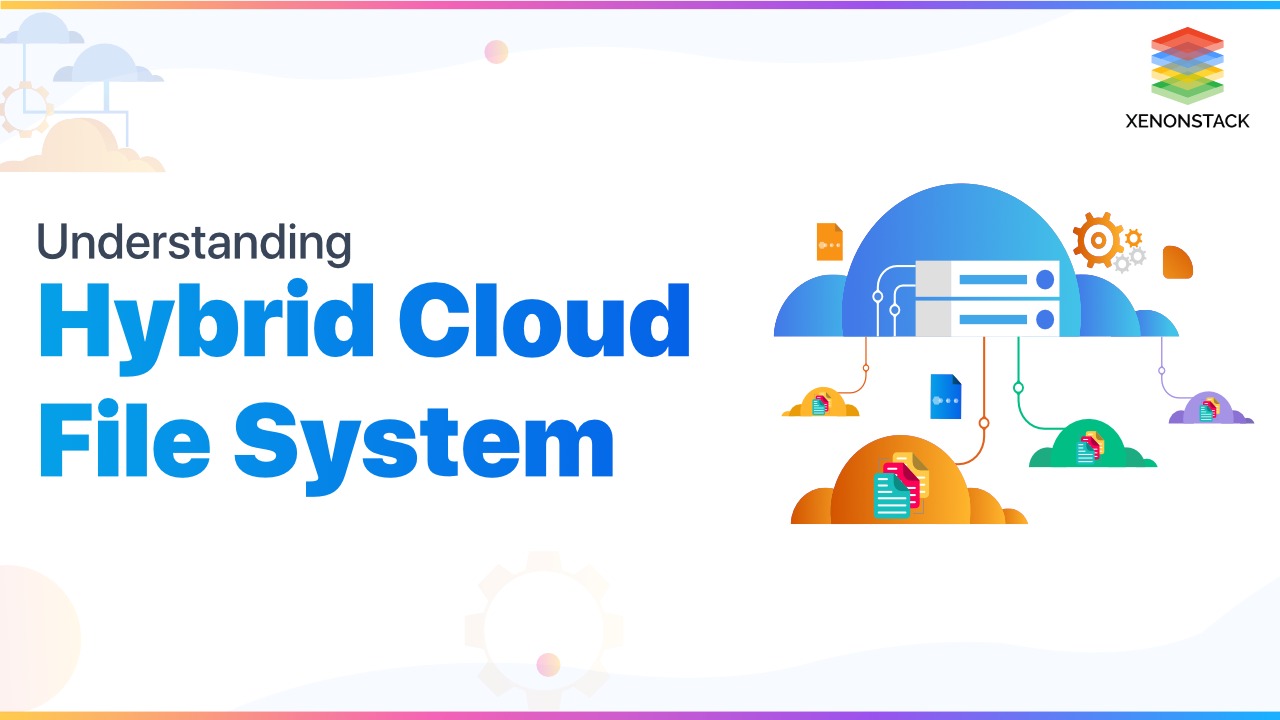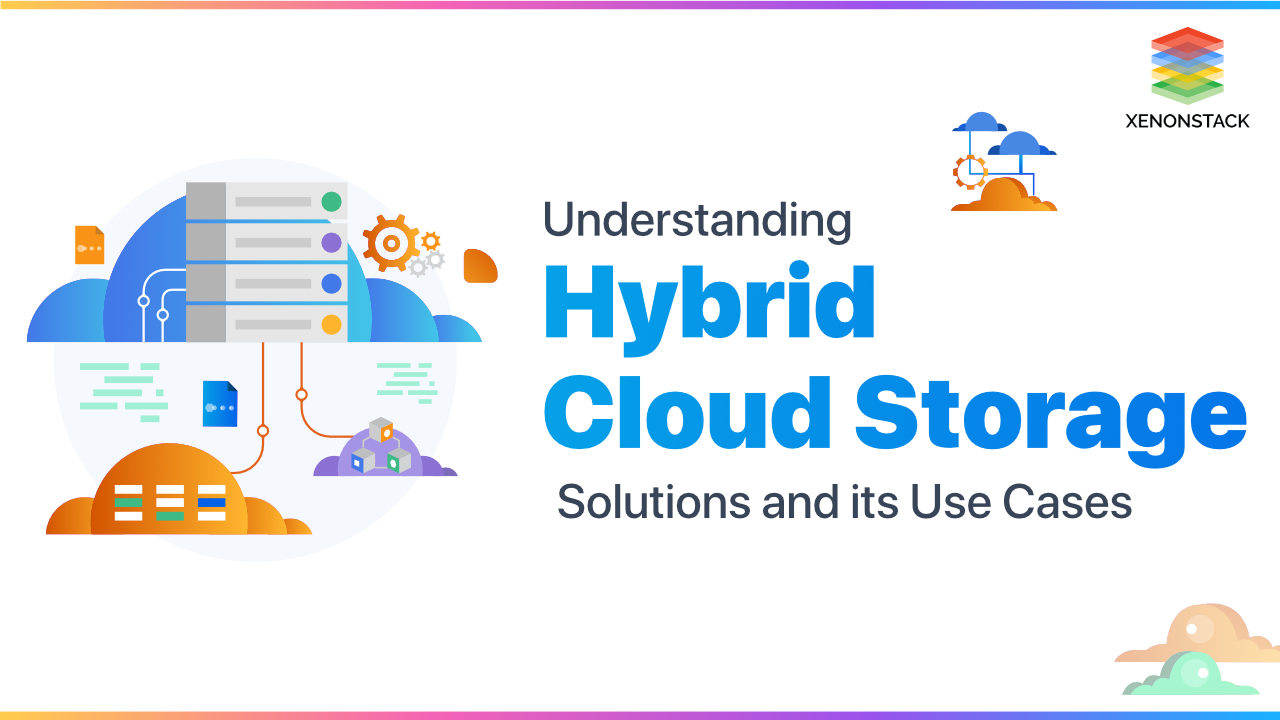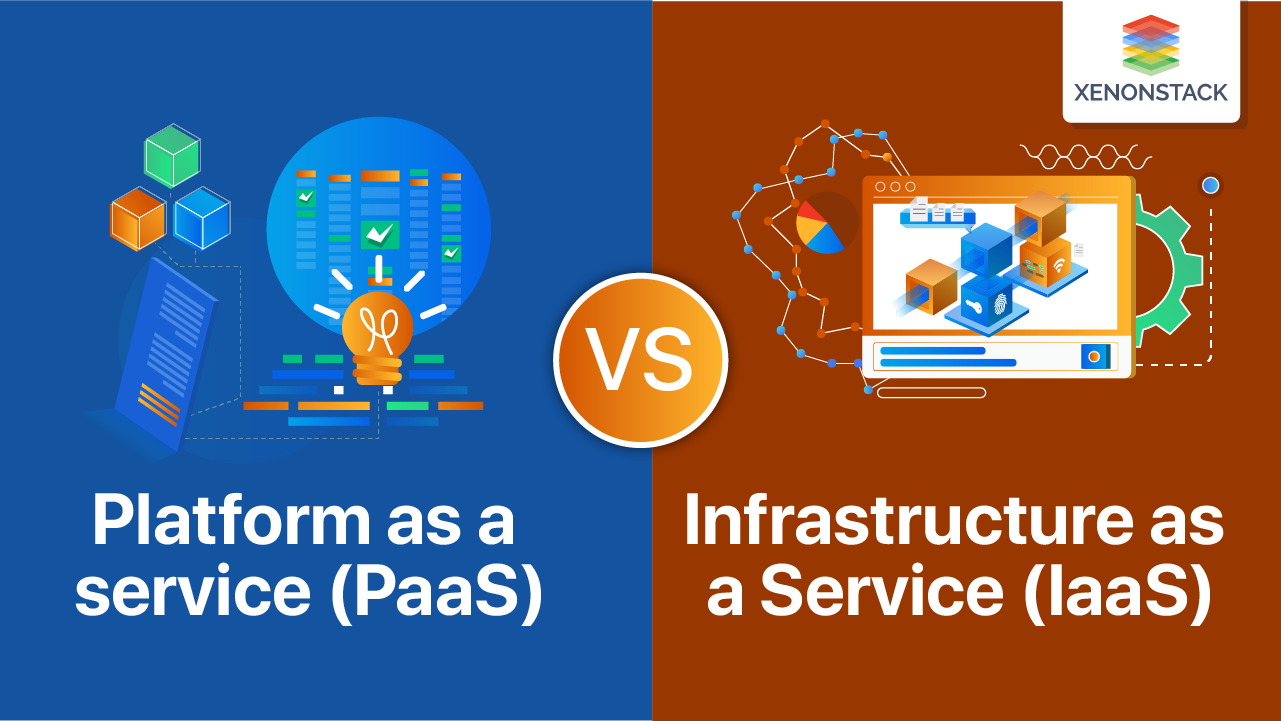
Overview of Hybrid Cloud File System
In cloud computing, the hybrid cloud brings up the use of a pair of on-premises resources as well as public cloud resources. A hybrid cloud sets up an organization to shift applications plus data to the cloud, widen their datacentre capacity, use new cloud-native capabilities, shift applications closer to the customer, and set up a backup as well as disaster recovery solutions along with immense cost-effective availability. It's a framework that comprises a link between a private cloud that is being managed by the user and the public cloud, which is governed by the third party.
A method of observing, reviewing, and managing the workflow in a cloud-based infrastructure. Click to explore about, Cloud Management and Monitoring Tools
What is Hybrid Cloud Storage?
Hybrid Cloud Storage is a path to manage storage that utilizes a pair of both local as well as off-site resources. It is most frequently used to postscript internal data storage along with public cloud storage.
What is Hybrid Cloud File System?
Hybrid Cloud File System enables global access; it yields a single namespace as well as a distributed file system to synchronize files over multiple sites. For scalability, it saves data in public cloud object storage like Amazon S3, Backblaze B2, and Wasabi.
Why Cloud System was not enough?
Thousands of businesses are taking their data to the cloud so that they can get the advantage of price, scalability, proficiency benefits related to not required to maintain or procure significant amounts of hardware and certainly, cloud data storage can inevitably lead to superior Return of investment for the organization; however, when these organizations choose cloud-only file systems like Box or Dropbox, they encounter significant problems- few of those can indeed outweigh the benefits.
These problems include -
- Due to inherent constraints in cloud protocols, accessing files from it is abundant with latency. This is mainly observed when we are accessing a large number of files or accessing a lot of data simultaneously.
- The approval schemes for cloud-based file systems are generally different than users' on-premises environment, leading to Active Directory approvals to become an issue at administrator level and user level.
- Since the files are located on remote servers, meaning not on the company's infrastructure, this IT manager ends up losing control and visibility over the data.
A significant amount of companies' efficiency usually depends upon its ability to allow sharing of files among various teams, along with remote offices and even with partners. In cloud-only file systems, performing these tasks are more complex. Most of the files out of the core Microsoft Office suite (such as design files or CAD) can't operate in cloud-only surroundings, rendering them entirely useless to companies that rely or trust on them.
With these problems, many companies are suffering losses and wandering about what to do. And on the other hand, storing data on the cloud is helping them in increasing efficiency and gaining competitive advantages. But these problems and limitations discussed above can decrease the productivity of the company. Luckily, there is a solution to resolve all of these problems and limitations while providing all of the benefits of cloud storage, and it is called the HybridCloud File System. It uses a limited hardware client on-premises which stores file metadata and accordingly syncs with cloud in the background.
An initiative to combine the storage interface of Container Orchestrator Systems(COS) such as Mesos, Kubernetes, Docker Swarm, etc. Click to explore about, Container Storage Interface for Kubernetes
What are the components of Hybrid Cloud File Systems ?
It's a cloud-centric solution, which means that it contains the master copies of all the data files which are stored inside the cloud. While the complete master copies of all the files are there in the cloud, on-premises hardware client sets up similar performance and the permission controls as a local file server or NAS (network-attached storage) device. To make the cloud transparent to users, it comprises a file server interface and MacOS finder interface or Windows File Explorer for network sharing. To facilitate global access, it gives a single namespace and distributed file system to synchronize files over multiple sites. For scalability, it saves data in public cloud object storage like Amazon S3, Backblaze B2, and Wasabi.
Files are directly synchronized to storage gateways in every location in real-time for allocation. This is the crux value of a hybrid cloud file system, which is not particularly global in scale but also extends to the respective on-premises location. It also facilitates true collaboration as well as if every remote team is functioning in the same office, which is connected to a single big performance file server. In the hybrid cloud File system, overwrite conflicts can be prevented because exclusive write permissions are assigned to these files, whereas this cannot be done in a cloud-only file system. If we compare the cloud file system and hybrid cloud file system in terms of performance, the comparison will come out to be dramatic. This ultimately depends on the relative speed of LAN vs. WAN, and the Hybrid Cloud file system can turn out to be 100 times faster. Thus, the hybrid cloud delivers the best of both worlds.
The most significant benefit is performance. Plus, these systems are proficient to read/write files at gigabit speed. As discussed earlier, the problems like shadow IT and active directory permission control fails to be the issues, since entire file systems are present within the companies' existing IT environment. And user interface impersonates just like the general on-premises NAS device, allowing users to access all the files seamlessly. File locking and file sharing are also frequently managed in the hybrid cloud file system, allowing multiple users to access similar files from the cache without requiring to download the content from the cloud every time. This optimizes bandwidth, simplifies easy and frequent file-sharing among teams and locations, it also consists of file locking for appropriate version control.
Hybrid Cloud delivers the high-security features of private cloud merge with the fast connection and easy-to-access features of the public cloud. Click to explore about, Hybrid Cloud Storage Architecture
What are the benefits Cloud Computing?
Also, to eliminate all the problems linked with cloud-only file systems, the hybrid cloud delivers more benefits, even more than those provided by cloud-only and on-premises systems. The reason is fundamental; as whole data is stored in the cloud, organizations can recover several considerable advantages which are expensive and complex to accomplish using conventional on-premises storage systems. Disaster recovery is also speedy and easy. As hybrid cloud file systems save various copies of the organization's data, it acts as its backup, thereby strengthening primary and secondary storage. First, every file is stored off-site, decoding a considerable protection need and an essential component of a companies' 3-2-1 storage strategy.
Also, because the hybrid cloud file system stores numerous copies of companies' data, it acts like its backup, thereby strengthening primary and secondary storage. Data recovery is also straightforward and fast. The companies' data can be recovered entirely in minutes. Finally, they use their protected tunnel for communications, due to which they don't need a VPN connection to access the file remotely. This not only eliminates the primary source of data hindrance for organizations, but it also allows most recent remote sites to be comfortably added by efficiently deploying hardware clients at the new location and syncing it along with the central cloud file system.
- Storage Consolidation - In the Hybrid Cloud File system, all the primary storage and secondary storage use the similar interface, and it exists in a unique namespace along with instant access.
- Backup/ disaster recovery - Every file has its master copy in the cloud, cache copy on-premises, and there is a duplicated cloud copy also which provides added protection. Version Control is also available to go through previous versions, which also plays a role in the prevention of ransomware attacks or human errors. Access records are audited for investigation and are also needed for compliance.
- Simple IT - Adding a brand new worksite is just like deploying a storage gateway. In most cases, hybrid cloud system users don't even require to know that they are also using a cloud file system. The users don't also need to learn VPN, FTP. In comparison to the cloud file system, office bandwidth in the hybrid cloud file system is very much optimized because the local gateway is the destination of most read/write operations rather than the cloud.

Hybrid Cloud File Systems Application Sectors
Verticals that hugely benefit from a hybrid cloud file system are -
- For syncing of multi-sites – Architecture engineering construction (AEC), manufacturing agencies
- For transfer of large files – Health and life science and media & entertainment AEC organizations (architecture, engineering, construction) often tackle large design files, those need to be mutually shared across numerous offices and job sites.
During collaboration across remote teams, these files sometimes need to be locked for write permission that too exclusively so that there is no inadvertent overwriting. Because of latency challenges and WAN bandwidth, the old method of VPN comes out to be inefficient when we remotely access a number of files. In these sectors, files are massive, making file synchronize, and transferring is challenging, and they are very collective with designs from numerous sites who are working on similar projects.
By joining all the factors of physical on-premises environments with that of cloud-only systems, hybrid cloud file systems allow organizations to gain the best of worlds truly. Thus, with hybrid cloud file systems, businesses of any size can attain the scalability, flexibility and cut the costing as well.
A Holistic Strategy
- Learn more about Enterprise Hybrid Cloud Storage Solutions
- Read more about Best Why we need Hybrid Cloud solutions
- Contact Us for Cloud Infrastructure Services and Solutions


